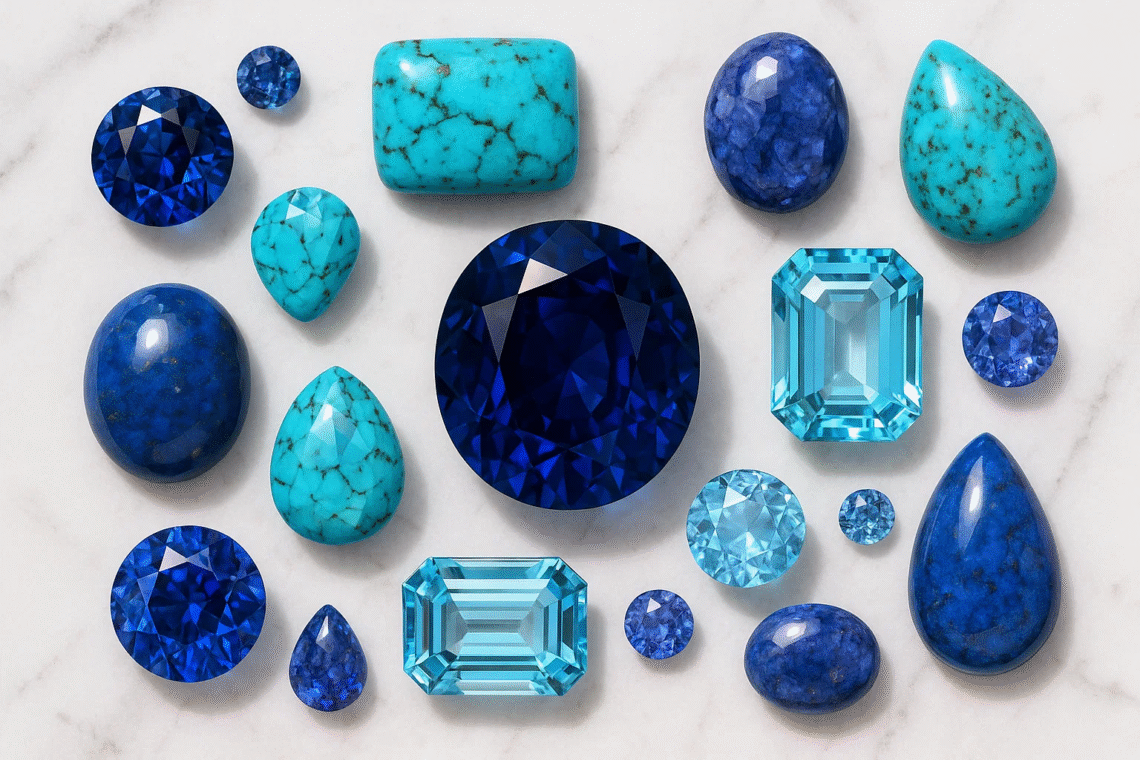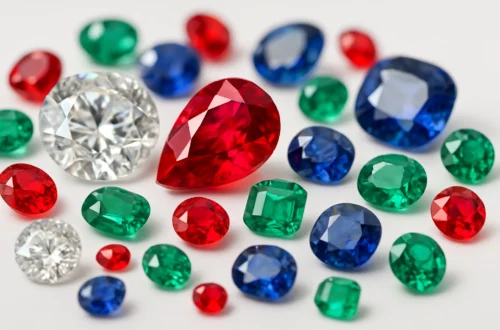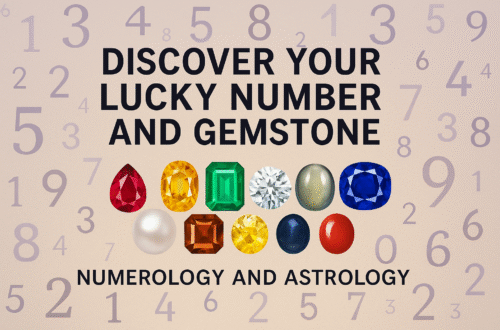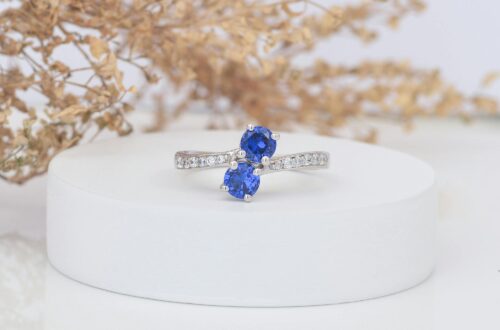Blue Gemstones: The Ultimate Symbol of Elegance and Power
From royal crowns to modern jewelry, blue gemstones have always embodied elegance, mystery, and emotional depth. Their striking hues remind us of the endless sky and tranquil ocean, symbolizing calm, confidence, and spiritual balance. Across history, rulers and visionaries have prized these radiant stones for their beauty and meaning, making them a timeless favorite among collectors and designers alike.
Every shade tells its own story. A light blue gemstone like aquamarine captures serenity and freedom, while deep sapphires reflect loyalty and strength. Whether precious or semi-precious, these gems continue to mesmerize for their rarity, color, and connection to nature’s most powerful elements. In this guide, you’ll explore what gemstones are blue, their origins, and why they remain some of the most desired treasures on Earth.

What Are Blue Gemstones?
Blue gemstones are among the most powerful and captivating treasures found in nature, representing trust, wisdom, and calm. Their color is not painted or treated but born from the Earth itself. The striking blue hues form when trace elements such as iron, titanium, and copper interact within the crystal during its natural growth. These elements create an extraordinary spectrum of tones from soft sky blue to intense royal shades, that make each stone completely unique.
Studies in mineralogy reveal that nearly 12% of all known gemstones exhibit some variation of blue. This makes blue one of the rarest yet most desired gemstone colors in the world, especially in fine jewelry markets where it symbolizes depth, clarity, and inner peace.
So, what gemstones are blue? The most admired include sapphire, aquamarine, turquoise, topaz, lapis lazuli, and tanzanite. Each carries its own legend and value, but all share that magnetic, oceanic glow that has fascinated collectors for centuries.
If you’re asking what is a blue gemstone called, the answer depends on its mineral family and tone. A precious blue gemstone like sapphire is prized for its rarity and depth of color, while a semi-precious option such as blue chalcedony or larimar offers soft elegance and affordability. In essence, what is blue gemstone called varies from stone to stone, but they all hold one common trait the power to inspire calm, confidence, and timeless beauty.
The Most Famous Blue Gemstones and Their Meanings
Throughout history, gemstones have symbolized depth, purity, and inner strength. Each stone carries its own story, origin, and energy, making it more than just a decorative jewel. Here are some of the most iconic blue gemstones names and the meanings that make them so special.
Sapphire – The Royal Blue Gemstone
The sapphire is one of the most celebrated blue gemstones, cherished for its deep, velvety hue and exceptional durability. Associated with loyalty, truth, and wisdom, sapphire has adorned royal crowns and engagement rings for centuries. Its intense blue tone reflects strength and faithfulness, making it a timeless favorite among collectors and jewelry lovers alike.
Aquamarine – The Light Blue Gemstone of the Sea
Aquamarine is a tranquil light blue gemstone that captures the calmness of ocean waters. Known as a symbol of clarity and serenity, it was once believed to protect sailors and travelers at sea. This pale blue semi-precious gemstone radiates soothing energy, making it ideal for those seeking balance and emotional healing.
Blue Topaz – The Radiant Sky Blue Gemstone
Blue topaz shines with a crisp brilliance reminiscent of a clear sky. Its cooling energy promotes calm communication and creativity. Loved for its affordability and vibrant sparkle, it is often chosen as a modern December birthstone and a chic everyday jewel.
Turquoise – The Ancient Blue Gemstone
Turquoise has been revered for thousands of years as a stone of protection and spiritual grounding. Its unique green-blue shades connect it to the earth and sky, symbolizing harmony and renewal. Many cultures believed turquoise guarded against negative energy and brought prosperity.
Tanzanite and Lapis Lazuli – The Exotic Blue Gems
Tanzanite, discovered in Tanzania, is prized for its violet-blue brilliance and rarity. Lapis Lazuli, on the other hand, is one of the oldest known blue gemstones, treasured by ancient civilizations for its deep ultramarine tone and golden flecks of pyrite. Both represent vision, creativity, and transformation, blending ancient mystique with modern elegance.
→If you’re curious about how gemstones connect to your personal energy and destiny, explore our guide on discovering your lucky number and gemstone through numerology and astrology.
Pale & Light Blue Gemstones: Subtle Elegance in Soft Shades
Soft and graceful, pale blue gemstones bring a refreshing calm that few other colors can match. These lighter tones capture the delicate side of nature’s palette reflecting the sky at dawn or the stillness of clear ocean waters. Their gentle color and soothing energy have made them favorites in both fine and minimalist jewelry designs.
When people ask, what gemstone is light blue?, the answer often includes some of the most serene and elegant stones ever discovered. Among them, Aquamarine, Blue Chalcedony, and Larimar stand out for their tranquil shades and symbolic meaning.
Aquamarine remains the most famous light blue variety, admired for its transparent clarity and ocean-inspired glow. Known as the “stone of courage,” it’s believed to calm the mind and enhance clear communication.
Blue Chalcedony has a milky softness that feels almost ethereal. It is valued for its nurturing energy, often used to promote harmony and emotional balance. This pale blue semi-precious gemstone fits beautifully into both vintage and modern jewelry settings.

Blue Gemstones by Rarity and Value
The worth of any gemstone depends on its rarity, clarity, and place of origin. Among the finest examples, sapphire is considered a truly precious gem, admired for its depth of color, durability, and limited availability from sources such as Sri Lanka and Madagascar. In contrast, blue topaz is more abundant, placing it in the semi-precious category while still offering exceptional brilliance and charm.
Origin adds prestige and value, with aquamarines from Brazil especially renowned for their clarity. At Pretty Facets, we provide trusted educational insights to help readers recognize authentic, ethically sourced gemstones and understand what makes them truly valuable.
Learn more about this royal gem’s heritage in our detailed article on the Sri Lankan blue sapphire and its enduring global allure.

Conclusion: The Enduring Magic of Blue Gemstones
From the regal brilliance of sapphire to the soft shimmer of aquamarine, blue stones continue to embody calm, confidence, and timeless beauty. Their shades reflect the sky, sea, and spirit, creating a perfect harmony of strength and serenity. Whether chosen for elegance, symbolism, or investment, these gems remain everlasting expressions of individuality and grace.
At Pretty Facets, we share this fascination through insightful and educational articles that celebrate the natural wonder of gemstones. Our goal is to help readers understand their origins, meanings, and beauty, inspiring a deeper appreciation for these treasures of the earth.
Frequently Asked Questions
What gemstones are blue in color?
Some of the most popular blue stones include sapphire, aquamarine, turquoise, tanzanite, lapis lazuli, and blue topaz. Each has its own unique tone, meaning, and origin, ranging from deep royal hues to delicate sky blues.
What gemstone is light blue?
Aquamarine is the most recognized light blue gemstone, admired for its soft oceanic color and soothing energy. Other pale blue varieties include blue chalcedony and larimar, both prized for their calm and elegant appearance.
Are blue gemstones considered rare?
Yes, certain blue gems like sapphire and tanzanite are considered rare due to limited mining locations and natural color intensity. Others, such as blue topaz, are more accessible but still valued for their brilliance and charm.





